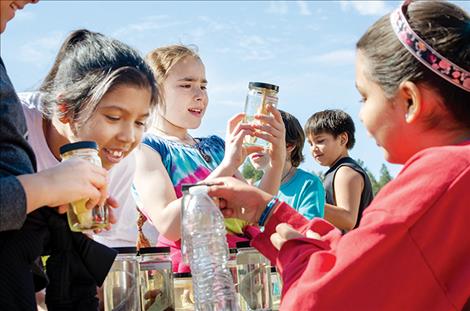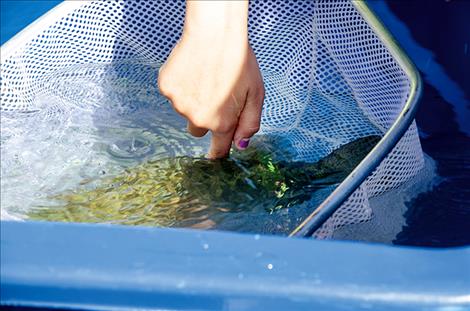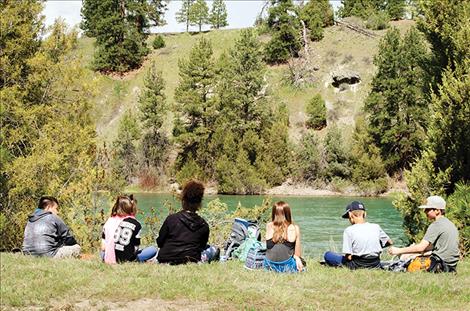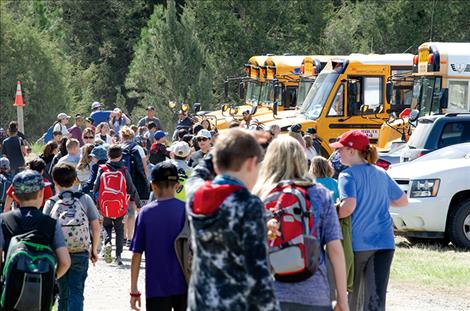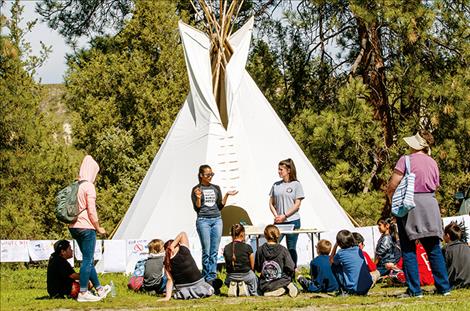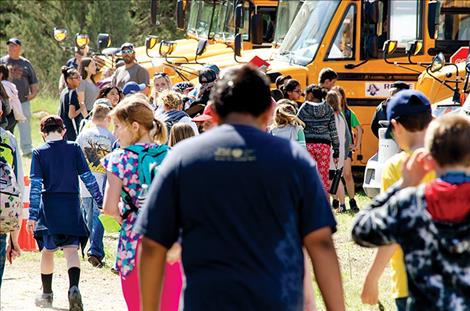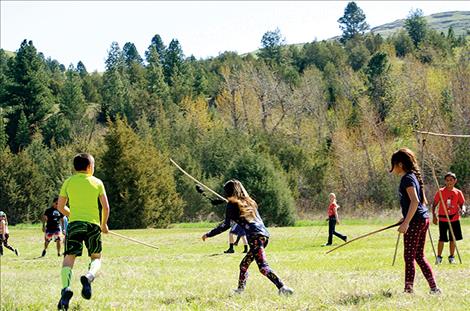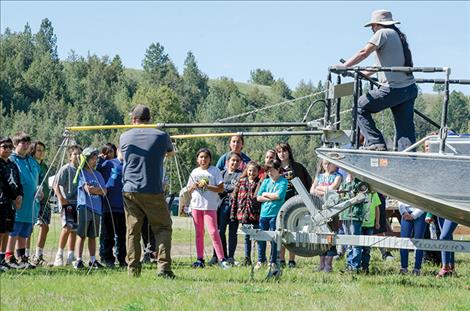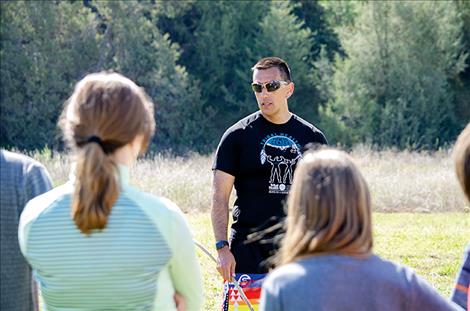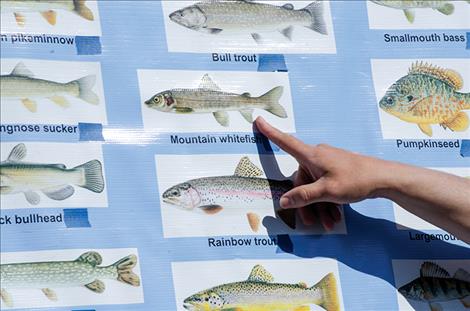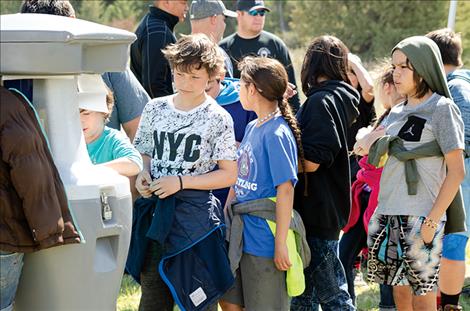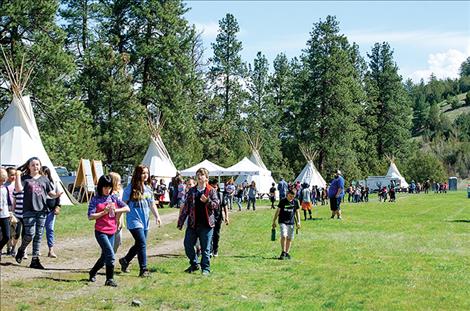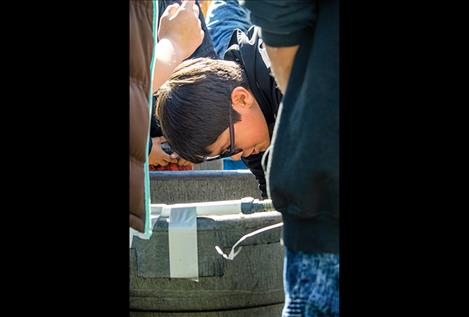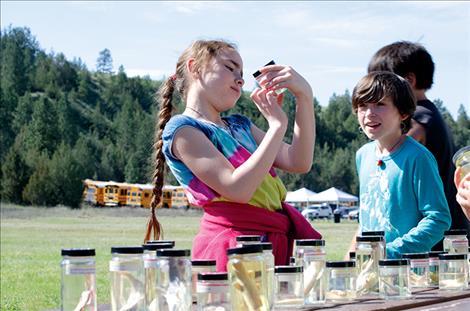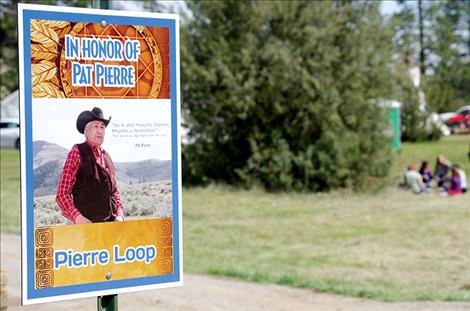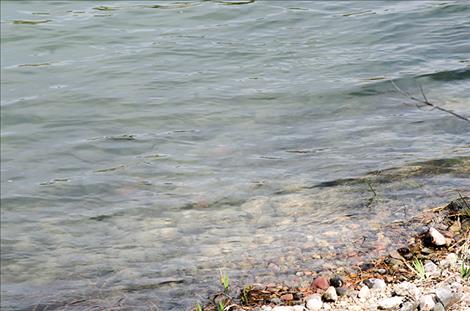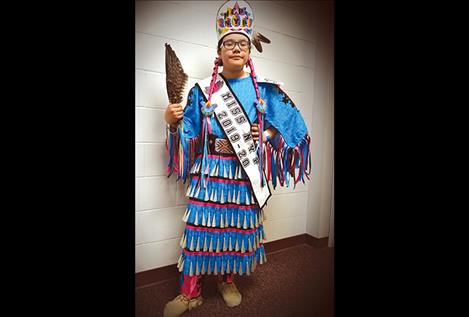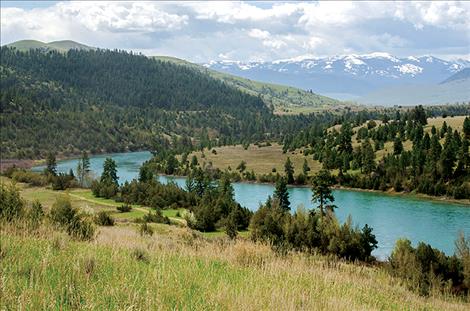Respect for nature taught at River Honoring event
Hey savvy news reader! Thanks for choosing local.
You are now reading
1 of 3 free articles.
FLATHEAD RIVER – A 10-year-old child reached in a bathtub-sized bucket and felt a wild smallmouth bass swim through her fingers. “It was cool and slimy,” she said. The fish usually lives in the Flathead River but was being utilized for educational purposes during the 33rd annual River Honoring.
Twenty-two teepees were set up at different stations along a section of the river. The Confederated Salish and Kootenai Tribes hosted the event. Children from across the Flathead Indian Reservation arrived in the morning hours with 500 attending on Tuesday and another 500 on Wednesday. Driving from Ronan, buses traveled west onto Round Butte Road before turning south on Moiese Valley road and parking near the river at the Woodcock campsite.
CSKT Information and Education Program manager Stephanie Gillin organized the event this year and the overall goal is to help children develop a connection to the land. “We want to teach kids to be good stewards by being respectful to the land, the water and the animals,” she said.
She added that elders recognized years ago that the river was important for life of all kinds and needed to be kept as natural as possible. “They said we needed to honor the river and respect it,” she said. “In our culture, respect is very important.”
Documents containing historical background about the River Honoring state that the lower Flathead River was home to the Pend d’Oreille, Salish and Kootenai people for thousands of years.
During the event, children attended stations with hands-on activates lasting for about 25 minutes each. They learned about many aspects of the river, including vegetation and land erosion, the damage aquatic invasive species can do, about the wildlife living around the river as well as ancestral skills and games.
Children listened as CSKT Fisheries Technician Mountain Wahl explained how the smallmouth bass got in the bucket at one of the stations. He said the process involves stunning the fish with an electrical current that doesn’t kill them, and then, they are scooped up with a net. Technicians wear rubber gloves and boots during the process while standing on the deck of a boat with a net.
He said the technique is used about every other year to study the fish and get an estimation of the species composition in certain habitats. He said a recent study of showed evidence that lake trout are starting to show signs of suppression. Years ago, he said, lake trout were a small percentage of the fish population, but shrimp were introduced into the Flathead Lake and that food supply allowed lake trout to establish is greater numbers. He said lake trout suppression could increase the bull trout population. “We only have a fraction of the population of bull trout that were historically here,” he said.
At another station, children looked grim as they learned that one invasive quagga mussel can lay 40,000 eggs in one cycle with 25 cycles a year adding up to one million eggs in a year. Adult mussels can live for two and a half to five years. It was said that if invasive mussels get into the local water systems then they could take over an ecosystem in months.
Across the field, children were playing the traditional game of double ball. Before the action began, Paul Phillips, lead fitness specialist for CSKT, talked to the children about the rules of the game. “The number one rule is that we show everyone and everything respect,” he said.
Phillips said learning to show respect was a lesson the kids could use throughout many aspects of life. He asked the kids if it was a good idea to wipe out all the berries or bitterroot if they go out and collect them. “We leave some so that there will be some next year,” he said. “If you take care of the land, it will take care of you. We show respect to everything.”
He said it was important to show respect to the water, including the river. “We wont last long without water,” he said. “From farmers to hunters or gatherers, we depend on the water.”
The idea of showing respect was also a philosophy that could be used to guide communities. “We need to help each other and build up the community and respect each other,” he said.
As the lunch hour came around, students sat on the grass in groups. Fifth-grade teacher Jon Gustafson of Polson Middle School sat with his students while they watched the river.
“This has been a fantastic day,” he said. “I really appreciate all the organizers for this great opportunity for the kids to get outside and experience nature.”
For anyone that wants to explore the river and surrounding areas, CSKT has a free app called the Animal Field Guide to the Flathead Reservation. It has information on 125 species and also includes an audio recording of each species name in the Salish and Kootenai languages. It contains information about the local animals, tracking, and the impact of climate change on each one and much more. The app was used at many of the stations during the River Honoring.
“The app shows us information about the importance of having respect and humility with animals and how it’s important to only take what you need from the land,” Gillian said. “We hope to expand it to include the entire reservation and higher elevations, but right now, it includes the Flathead River.”















